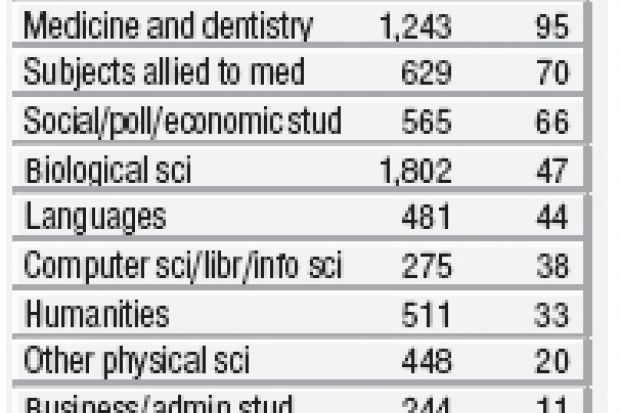The number of UK students taking PhDs in science subjects is continuing to plummet, according to official figures.
The percentage of UK students taking PhDs in physics fell by 15 per cent between 1995 and 2003, with numbers for chemistry falling by 5 per cent and for mathematical sciences by 2 per cent, according to figures produced by the Higher Education Funding Council for England.
Academic staff numbers in these areas also fell in this period by 10 per cent in each of the three subjects.
Peter Main, education and science director at the Institute of Physics, said: "The fall in (the number of PhDs is particularly worrying. The institute is concerned that debt is making it hard for graduate physicists to undertake further study."
Professor Main added: "The International Perceptions report on physics and astronomy also noted the high number of overseas PhD students in physics.
While this creates a healthy and diverse community, we need to ensure that our home students are not being deterred by debt."
He said that the fall in staff numbers might not be as bleak as it appeared, as there had been a growth in advanced research fellowships, which would not show in the data.
The figures are part of an interim report by Hefce on workforce planning.
The report argues that the trends in staff numbers reflect changing student demand. It repeats the message from last year's review of strategically important subjects that there is no "crisis" in the sciences.
A spokesman for the Royal Society of Chemistry said that the figures were to be expected given the recent closure of a number of chemistry departments.
"We continue to be concerned at the geographical concentration of chemistry and the access issues this raises," he added.
The Hefce report also shows substantial increases in PhD numbers in other areas. The number of PhDs in medicine and dentistry rose by 95 per cent over the same period - an increase largely attributed to the growth of professional doctorates, which allow clinicians to develop their research skills mid-career.
The sharpest rise came in the creative arts and design where numbers rose from 53 to 158, an increase of 198 per cent. Academic staff numbers in these areas rose by 66 per cent and 42 per cent respectively.
Register to continue
Why register?
- Registration is free and only takes a moment
- Once registered, you can read 3 articles a month
- Sign up for our newsletter
Subscribe
Or subscribe for unlimited access to:
- Unlimited access to news, views, insights & reviews
- Digital editions
- Digital access to THE’s university and college rankings analysis
Already registered or a current subscriber?
